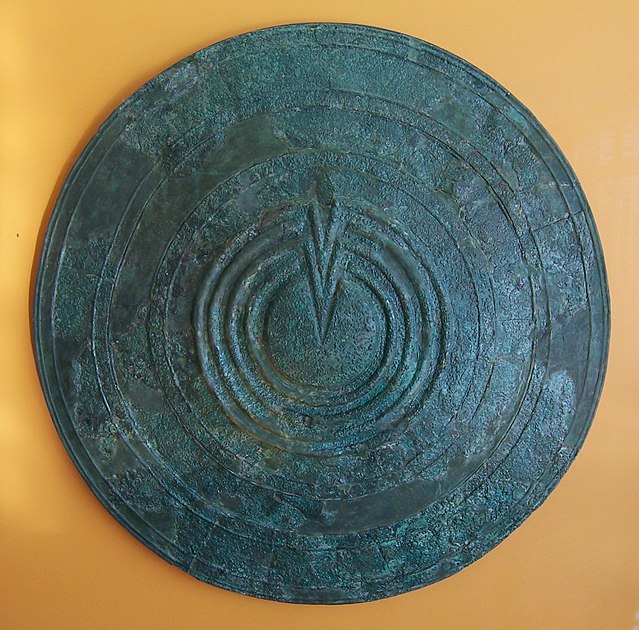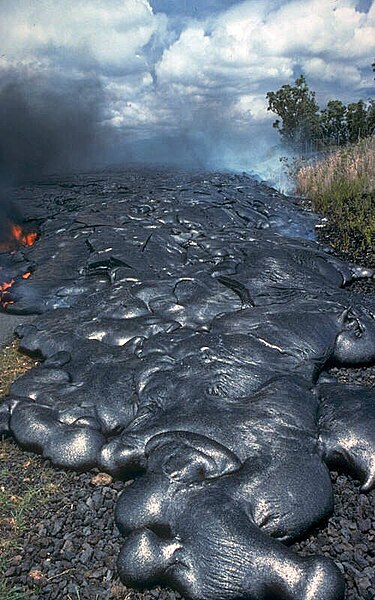A shield volcano is a type of volcano named for its low profile, resembling a shield lying on the ground. It is formed by the eruption of highly fluid lava, which travels farther and forms thinner flows than the more viscous lava erupted from a stratovolcano. Repeated eruptions result in the steady accumulation of broad sheets of lava, building up the shield volcano's distinctive form.
Mauna Loa, a shield volcano in Hawaii
An Ancient Greek warrior's shield—its circular shape and gently sloping surface, with a central raised area, is a shape shared by many shield volcanoes.
ʻAʻa advances over solidified pāhoehoe on Kīlauea, Hawaiʻi
A pāhoehoe lava fountain on Kīlauea erupts
Lava is molten or partially molten rock (magma) that has been expelled from the interior of a terrestrial planet or a moon onto its surface. Lava may be erupted at a volcano or through a fracture in the crust, on land or underwater, usually at temperatures from 800 to 1,200 °C. The volcanic rock resulting from subsequent cooling is also often called lava.
Fresh lava from Fagradalsfjall volcano eruption in Iceland, 2023
Toes of a pāhoehoe advance across a road in Kalapana on the east rift zone of Kīlauea Volcano in Hawaii, United States
Columnar jointing in Giant's Causeway in Northern Ireland
Lava enters the Pacific at the Big Island of Hawaii.








